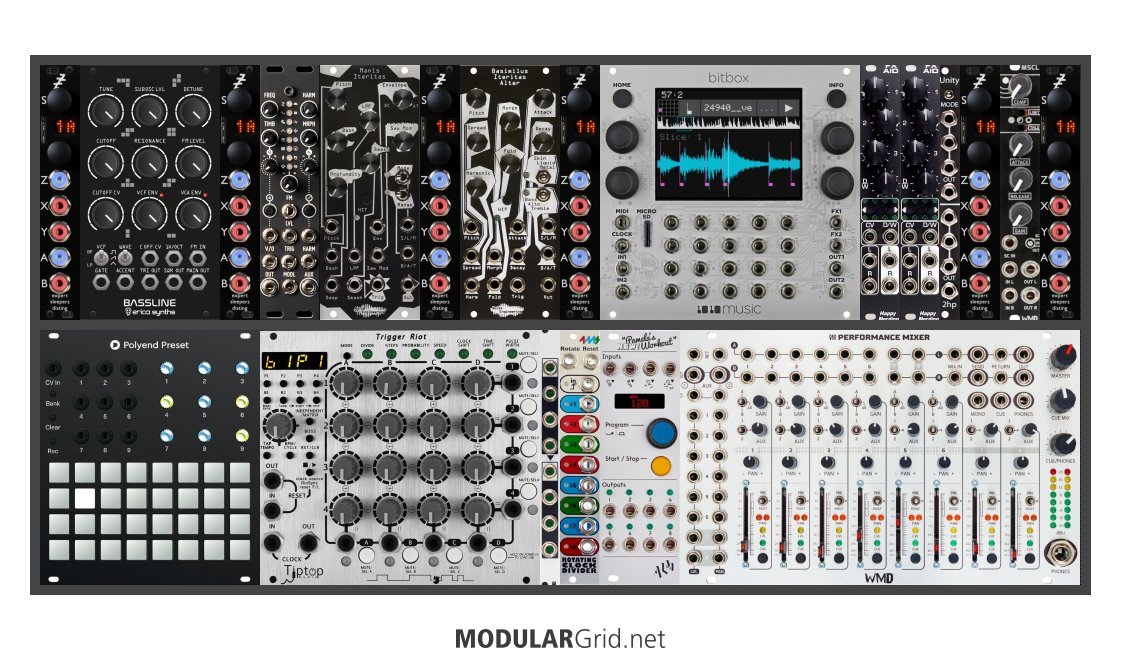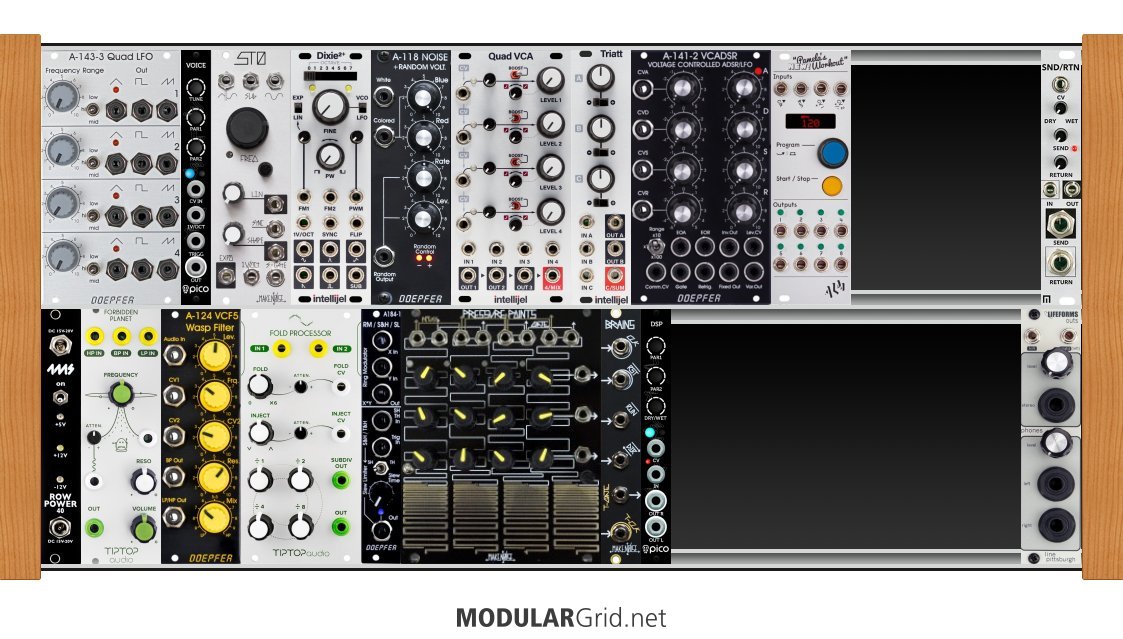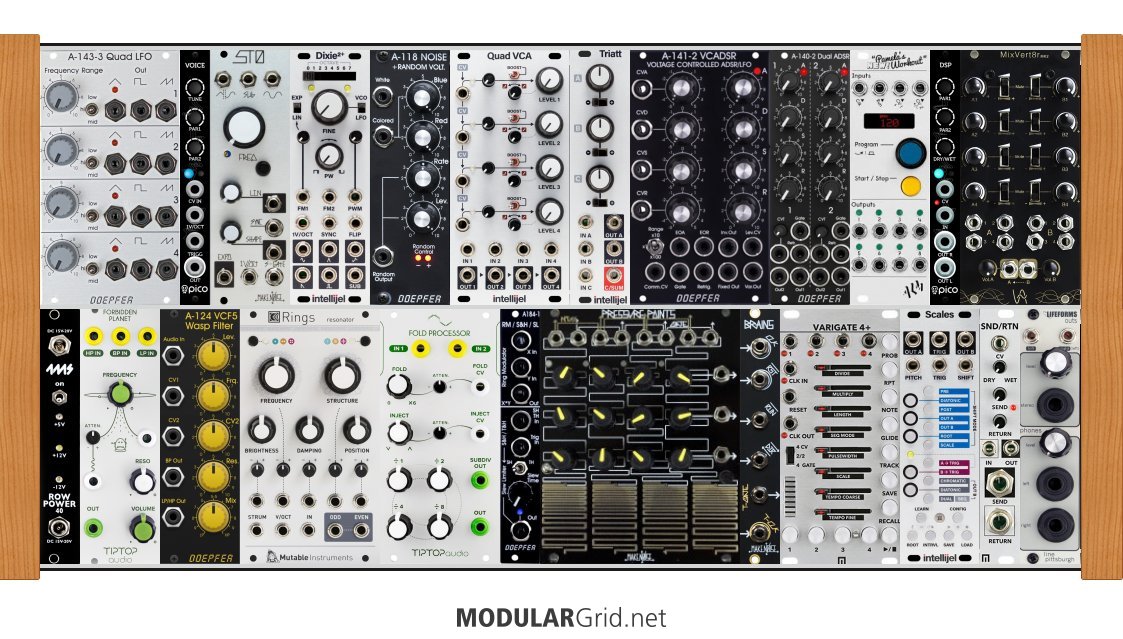Hi All,
I'm currently trying to put together a small techno system in an Erica travel case (2 x 104HP). I would be aiming to make mainly hardish, drum focussed techno rather than melodic but might sometimes do some ambient/drone or down tempo stuff.
I was hoping for some advice on module selection. I already own the Trigger Riot, 1 x Disting MK4, BIA and have the performance mixer on back order.
This is what I have so far: 
My rational for module choices is as follows:
Trigger riot:
Coming up with unusual patterns that I wouldn't program on an X0X beat grid
Performance Mixer:
Place to bring everything together with fader control realtime, 2 x Aux sends, main FX loop, outputs and headphone outs.
BitBox:
Main voice module for non-synth drums allowing some sampled kicks, hats, claps and stabs. Would also get used in Synthbox mode for ambient.
Polyend Preset:
Would allow for 'playing' groups of CV settings when jamming e.g. filter cutoff on bassline, DJ filter on main output, FX return levels, CV inputs on BIA, MI & Knit etc.
Pamela's New workout:
Clocked CV source and additional trigger source. Am hoping that it could be used on the level CV input in mixer to simulate sidechain on the bassline input.
Basimilus Iteritas Alter:
Interesting Drum sounds that can be modulated dynamically
Manis Iteritas:
As above with a different voice
Knit:
Additional drum voice or melodic voice in the case of making an ambient drone track
Erica Bassline:
Primarily for basslines, compact voice with nice aggressive filter
6 x Disting:
General utilities like DJ filter for main output, clocked MIDI player for Bassline/Knit, HPF for MIA and MI, HPF for compressor sidechain, LFO.
2 x FX Aid:
Mainly reverb and delay, sometimes chorus.
WMD MSCL:
Bus compressor for the main outputs to glue everything together and hopefully add some very mild saturation. I would probably aim to sidechain this using an HPF on a Disting to stop the kick and bass from pumping it too much.
Rotating clock divider:
Additional trigger source.
Mult:
Distributing clocks and resets.
6->2 mixer:
Mixing the two FX processors so that they only use one stereo channel on the mixer.
All suggestions and advice would be most welcome.
Cheers,
Joe




